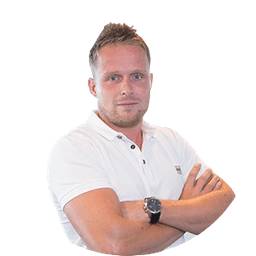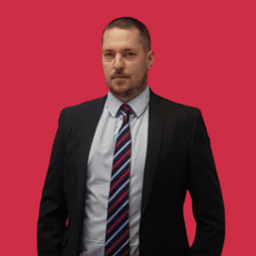Cost Per Thousand (CPM)
Budget Efficiency
Make real-time decisions about where to allocate the advertising budget based on cost-effectiveness for ad impressions.
Driving Reach
A low CPM provides more visibility, useful for scaling campaigns as advertisers pay less to reach more people.
Optimization
Helps refine ad designs and placements for better performance of CPM marketing campaigns.
Client Reports
CPM quantifies visibility, simplifying client expectations and reporting on reach and advertising costs.
Why CPM Is Important
CPM is a key metric that helps marketers understand the economics of advertising cost and reach. CPM stands for "Cost per Mille," where "Mille" is Latin for a thousand. In advertising, CPM represents the cost of 1,000 impressions on a digital platform. It's a standard metric used to evaluate the cost-effectiveness of an ad budget as well as the reach of an advertising campaign.
In essence, CPM clarifies how much bang advertisers get for the buck regarding impressions. For instance, if it's costing an arm and a leg to spread a brand's message far and wide, CPM will be the first metric to provide that reality check. It provides a straightforward way to compare the cost-efficiency of different campaigns or advertising platforms.
Stop Wasting Time on Manual Reports... Get PPC Insights Faster With AgencyAnalytics
How CPM Relates To Other KPIs
CPM has a direct impact on other key performance indicators (KPIs) like Click-through Rates (CTR), Return On Ad Spend (ROAS), and ROI.
High CPMs are a red flag, signaling that campaigns might be spending too much without adequate returns.
Conversely, a lower CPM often suggests the CPM campaigns are reaching more people for less, potentially boosting other metrics. However, quality often trumps quantity in the digital space, so it’s important to balance the CPM against other KPIs, such as conversion rate and average order value, to ensure the investment reaches the right people.
A good metric is something that can be quickly and easily translated into a result, whether that be positive or negative. If the goal is to increase brand awareness, then impressions or reach become extremely important. If sales are the end game, then ROAS is king.
How To Calculate CPM
Calculating CPM doesn't require a degree in rocket science, but it does offer rocket fuel for campaigns. The formula focuses on two main components: the total cost of the campaign and the number of impressions garnered. This calculation is crucial, not just as a standalone figure, but as a baseline to judge the cost-effectiveness of various advertising ventures.
Here's the fun part—the formula. To calculate the CPM, divide the total cost of the campaign by the total number of impressions. Since CPM represents the Cost per Thousand impressions, multiply that quotient by 1,000.
CPM Calculation Formula
What Is a Good CPM?
A low CPM doesn't always equate to a slam dunk. It may be great for raw impressions, but the context is crucial.
For instance, getting a low CPM is of little benefit if the click-through rate (CTR) and conversions are abysmal. Throwing money into a less-expensive black hole helps no one.
Generally, a good average CPM offers high visibility at a cost that doesn't break the bank and aligns well with other performance metrics.
What Is a Bad CPM?
A high CPM, on the other hand, isn't automatically bad but should flash some warning lights on any marketing dashboard.
When marketers are paying top dollar for impressions but not seeing corresponding spikes in engagement or conversions, it's time to reevaluate.
Particularly with auction-based platforms, there may be opportunities to scoop up a slightly smaller slice of the pie with a substantially lower CPM by adjusting max bids.
Why CPM Matters to Clients
Getting the most bang for the buck is what every client wants. CPM shows how cost-efficient an ad campaign is at generating impressions and reach. For clients, CPM represents a clear benchmark of success in online advertising.
A lower CPM means more impressions for less money, maximizing the reach of digital marketing efforts. In a CPM campaign, this could be the difference between being a needle in a haystack and being the haystack.
Why CPM Matters to Agencies
Even when not bidding using CPM pricing models, Cost per Thousand is essential for budget pacing and managing reach-focused ad campaigns. Agencies view CPM as a vital performance metric for different reasons. Efficient CPM rates validate an agency's capability to deliver broad audience reach at a reasonable cost.
The metric also informs strategic decision-making; it reveals which advertising platforms offer better value. High CPM values on specific channels warrant immediate strategy reassessment. Agencies leverage a CPM model to optimize resource allocation, ensuring clients receive maximum impact for their investment.
Better, Faster & Easier Client Reports Are Just a Few Clicks Away
Best Practices When Analyzing and Reporting on CPM
Conducting a comprehensive analysis of CPM through various lenses sets the stage for more effective and efficient advertising campaigns.
Analyze CPM Over Time
Assessing CPM over a specific timeframe offers valuable insights into the effectiveness of advertising strategies. A rising CPM indicates increased competition or less effective ad placements. Conversely, a decreasing CPM suggests the need to be more cost-efficient. Periodic weekly or monthly analysis helps spot these trends and adjust the strategies accordingly.
Compare CPM Across Channels & Campaigns
Not all channels or campaigns are created equal, and CPM reflects that. Compare the CPM of different platforms like Google Ads, social media, or email marketing to identify which is most cost-efficient. This comparison aids in reallocating the budget to channels that provide better value for each impression.
Interpret Trends and Anomalies in CPM
Sudden spikes or drops in CPM may require immediate attention. A sudden increase might be due to seasonality or bid pressure from a competitor that has entered the space. A sudden drop, while seemingly positive, could mean less competition and less visibility or relevance.
Put CPM in the Context of Other Metrics
When presenting CPM data, placing it within the broader context of other key metrics like click-through rate (CTR) and conversions is critical. CPM alone might not reveal much, but it provides a more complete picture of campaign effectiveness when analyzed alongside other metrics. For example, a low CPM combined with a high CTR usually signals a well-optimized campaign.
Visualize CPM Performance
Numbers on a sheet are daunting. Turn those digits into easily digestible visuals. Trends in CPM become more apparent, and clients quickly grasp how fluctuations in CPM correspond to other metrics or campaign changes. Data visualizations not only make the data more accessible but also more actionable.
Align With Client Goals
Complete the reporting by connecting the dots between CPM and the client's specific objectives, whether increased brand awareness or more online sales. Demonstrating that a favorable CPM leads to strong goal completion rates will validate the agency’s efforts and cement the value of CPM as a crucial metric in the client's eyes.
FAQs About Cost Per Thousand (CPM) in Digital Advertising
Still have questions about how to calculate CPM or when to use it? These answers explain how CPM fits into digital marketing strategy, how it compares to other cost-per metrics, and what agencies should know when pricing web ads or planning ad campaigns.
CPM stands for "Cost Per Mille," meaning the cost per thousand ad impressions. It’s a pricing model where the advertiser pays a fixed rate for every 1,000 times an ad is shown, regardless of whether it's clicked. CPM is one of the most widely used metrics in the advertising industry to gauge reach and ad exposure.
CPM reflects what an advertiser pays per thousand impressions, while eCPM shows the effective rate across multiple formats and bidding strategies. Although calculated similarly, CPM is often used as a set bidding strategy while eCPM is calculated based on the actual impressions served. CPC measures cost per click, making it better for driving conversions. Most agencies use CPM to assess reach and CPC for performance-focused ad campaigns.
CPT (Cost Per Thousand) and CPM (Cost Per Mille) are often used interchangeably, as both refer to the cost per 1,000 ad views. CPM is the standard marketing term used globally, especially in digital marketing and display advertising.
CPM bidding is ideal for brand awareness campaigns where reaching a target audience matters more than clicks. It offers predictable costs for ad impressions and broad visibility, making it effective for large-scale digital advertising across high-traffic websites.
With CPM, you pay for impressions—whether or not users engage. This may inflate advertising costs for campaigns focused on conversions. Unlike CPC, CPM doesn't guarantee action, so it’s less suited for performance campaigns aiming to drive measurable outcomes.
CPM helps guide media planning by estimating how much it will cost to reach your target audiences. It’s especially useful when evaluating display ad campaigns or platforms that prioritize impressions over clicks. A lower CPM means greater reach within the same advertising budget.
Brand awareness campaigns typically accept higher CPM rates to maximize visibility among potential customers. Performance campaigns require lower CPMs paired with high engagement. Benchmarks vary by industry, but understanding cost per thousand impressions helps set realistic goals tied to campaign intent.
Yes—agencies can use a CPM calculator to quickly determine cost per thousand impressions. Some advertising platforms offer built-in forecasting, but standalone tools give faster insights. While free tools provide a starting point, professional platforms like AgencyAnalytics help track and report CPM alongside other KPIs.
Facebook Ads Dashboard Example
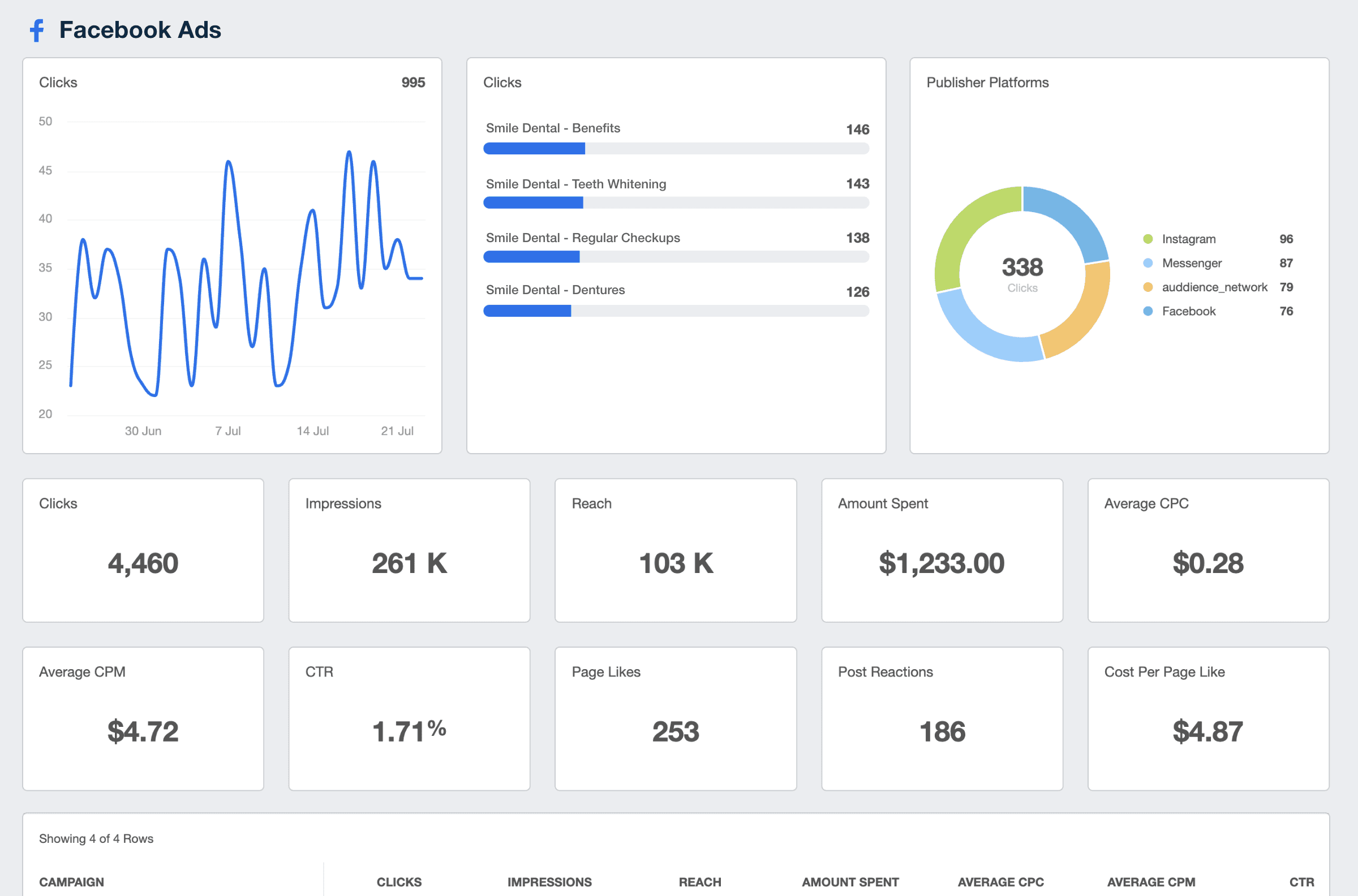
Related Integrations
How To Improve CPM
Improving CPM leads to more cost-effective digital advertising campaigns. Here are three unique and actionable tips to reduce the cost of CPM campaigns.
Refine the Target Audience
A scattergun approach rarely works well in advertising. Narrowing down the target audience on platforms like the Google Display Network increases the ads' relevance and either lowers the CPM or makes the spend more relevant. Platforms like Facebook allow granular audience targeting based on various factors, from location to interests.
Optimize Ad Design and Copy
The CPM pricing model is also influenced by how engaging an ad is. High-quality graphics and compelling copy are more likely to capture attention, leading to a better engagement rate. The more users interact with an ad, the more platforms view the ad as relevant to the audience, potentially lowering the average CPM.
Adjust Max Bids for Lower-Cost Placement
Playing with bid settings is a strategic move to lower CPM. Reducing the maximum bid limits the amount an advertiser is willing to pay for 1,000 impressions. While this may take the brand out of highly competitive placements, it opens up more opportunities in lower-cost ad inventory.
Related Blog Posts
See how 7,000+ marketing agencies help clients win
Free 14-day trial. No credit card required.





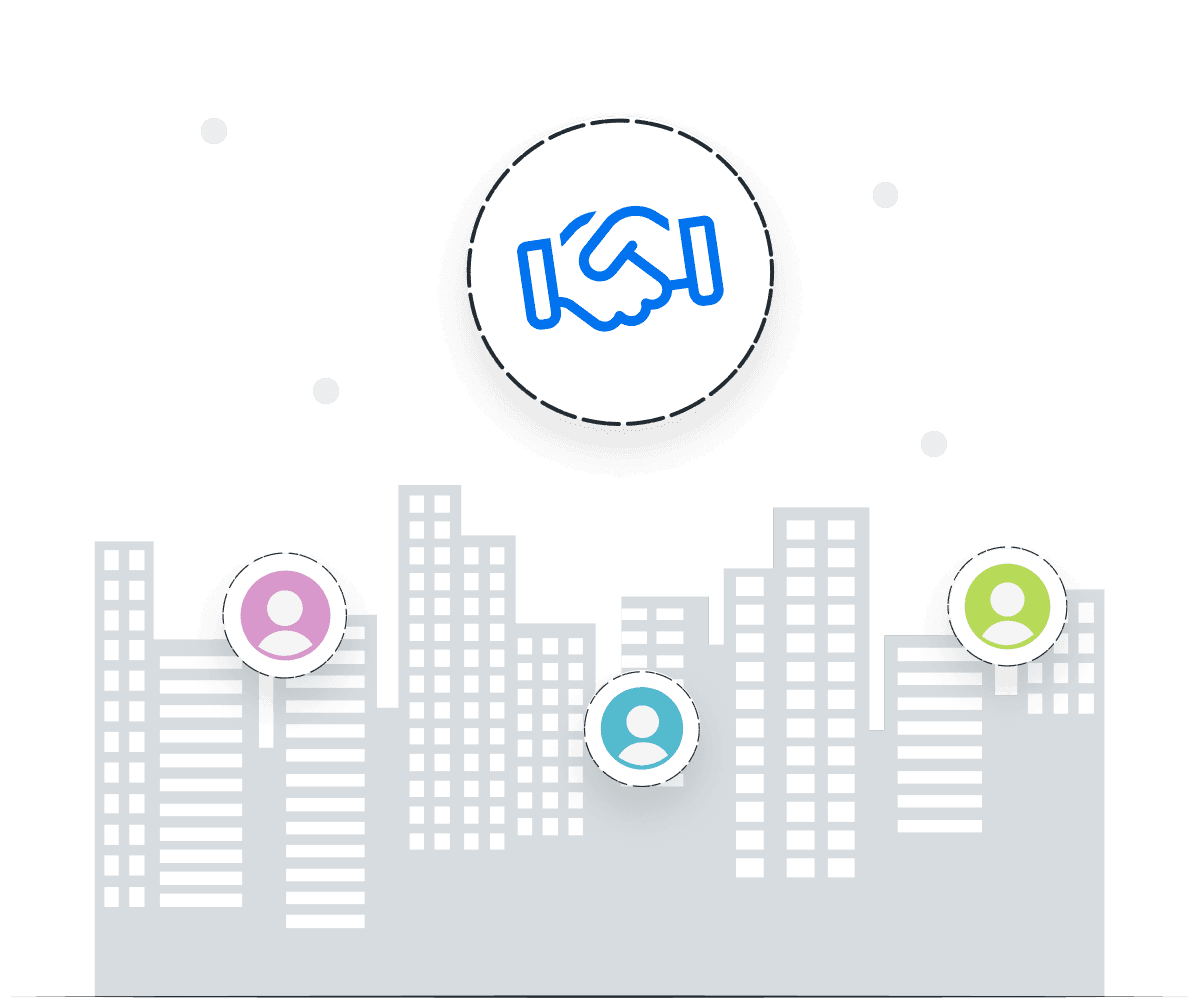
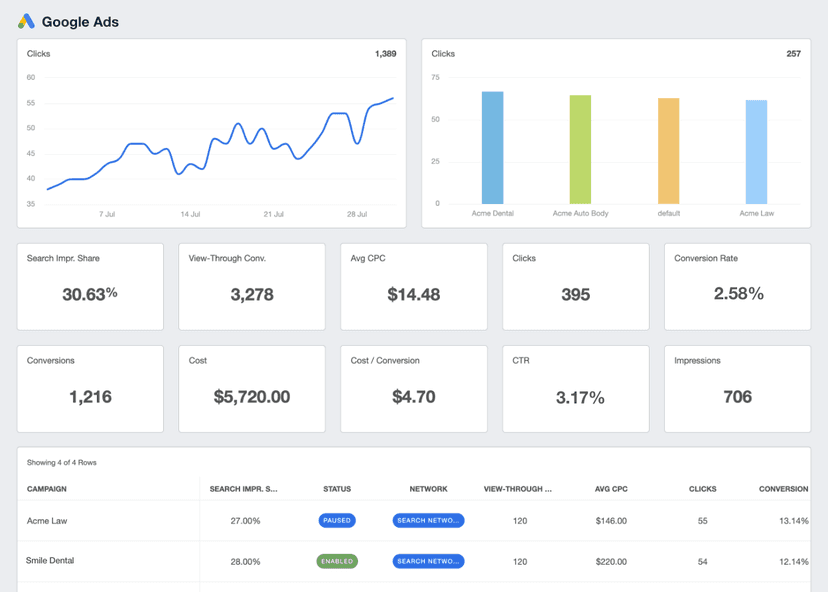
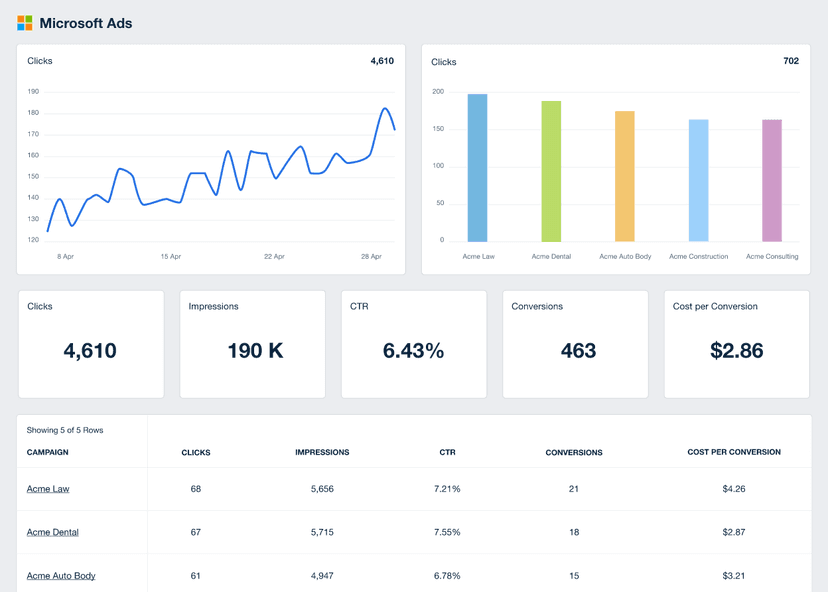

![The Ultimate Google Ads Optimization Checklist [Guide & Tips] An Easy to Follow Guide to Google Ads Optimization + a Downloadable Checklist](/_next/image?url=https%3A%2F%2Fimages.ctfassets.net%2Fdfcvkz6j859j%2F1RGRDTvZOx2bH3PCJMjDsD%2Fc239f0aed512ea0e761f3713dd6e59ac%2FGuide-to-Google-Ads-Optimization-Checklist.png&w=1920&q=75)

